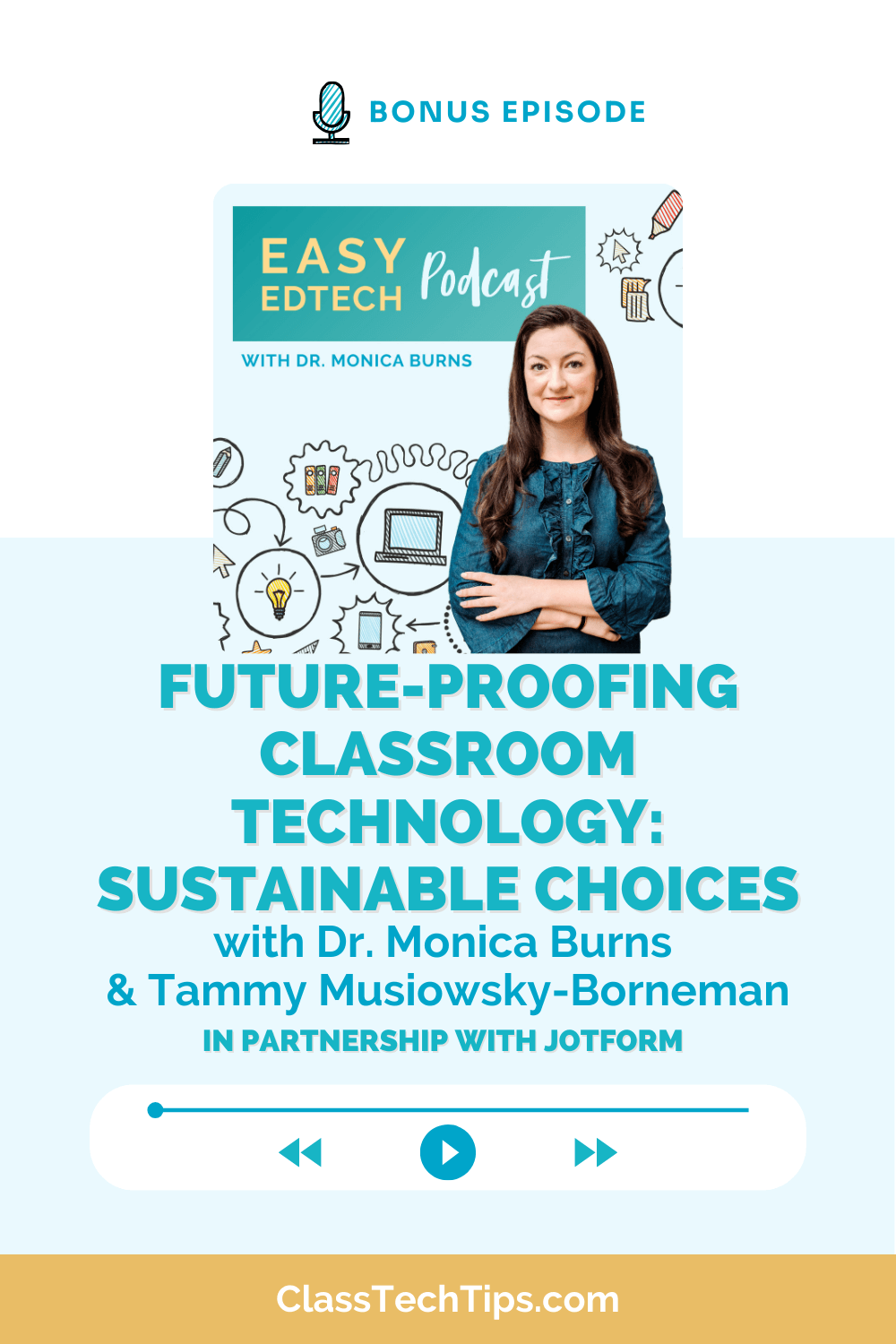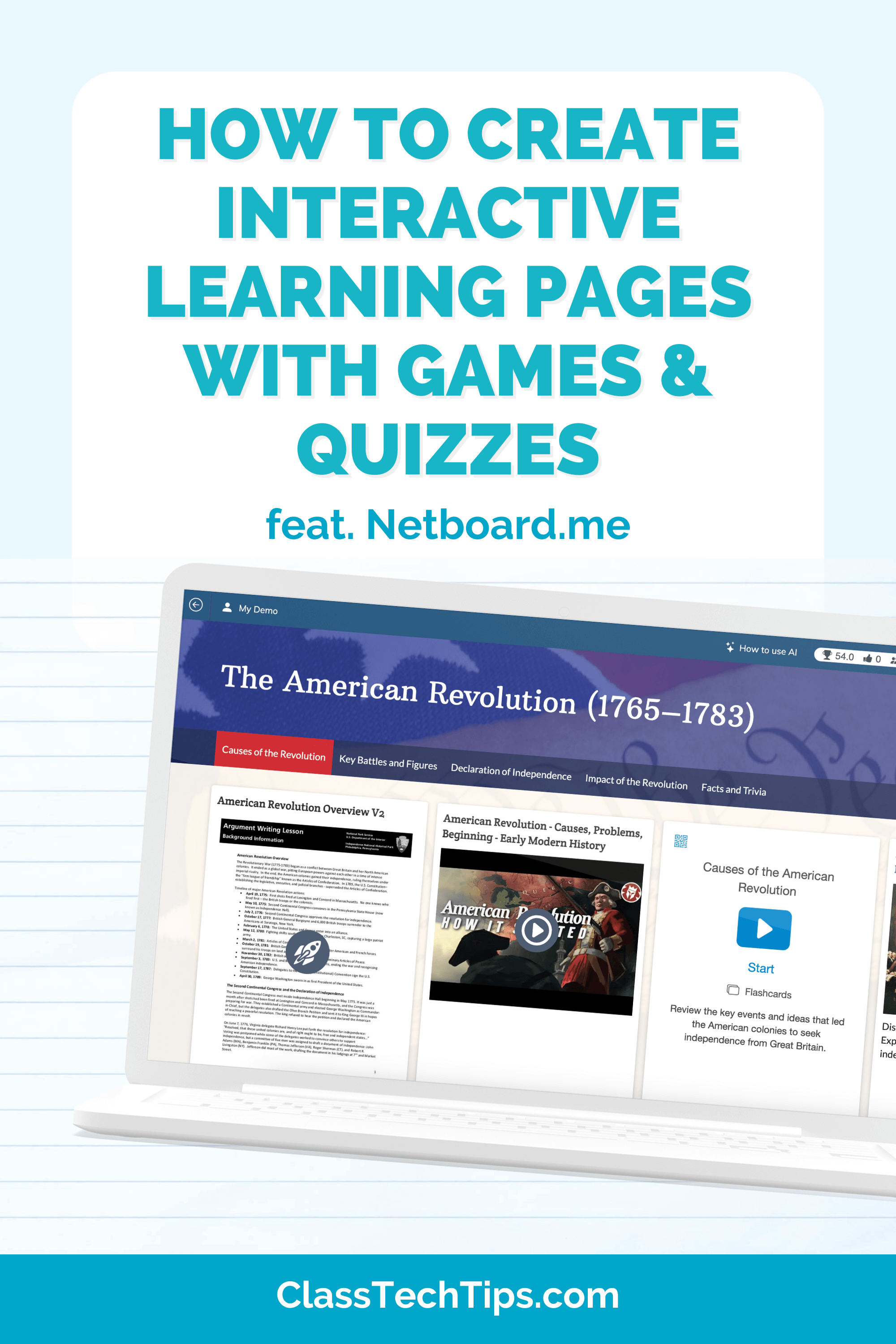What does student engagement truly look like? And are we making it a priority when entering classrooms and leading lessons? As an educator who now spends time in other teachers’ classrooms, I think about this topic often. And as someone who is wary of using technology just because it’s bright and shiny (aka “tasks before apps”), I always want to make sure we’re using digital tools with a purpose.
Using Technology to Increase Student Engagement
In this blog post, I feature an interview with Heather Wolpert-Gawron about her new book Just Ask Us: Kids Speak Out on Student Engagement. She is committed to helping educators reach their students through engaging learning activities. Heather shared the story behind her book as well as some of her must-have technology tools. Before diving into the interview, I’ve highlighted a few of my own favorite ways to leverage the power of technology to increase student engagement.
Social Shares
You can take a spin on a traditional exit slip by giving students a chance to create something more social. In this blog post on virtual exit slips, I offer an idea on setting up students with Spark Post. They can use this graphic design tool to create the same social graphic they are familiar with seeing on Facebook, Twitter, and Instagram.
Although you might not ask students to share their thoughts on a lesson or new strategy on Instagram, there are other options. You can simulate these social shares in a space you already use with students like Seesaw or Google Classroom. Students can post in this space to share their learning in the same way they might use a social network to share a moment from their weekend.
Backchannels
As you’ll see Heather mention below, Today’s Meet was a go-to tool for sharing with educators. I featured it in my book #FormativeTech and when presenting on the topic to educators across the country. In a webinar earlier this year I provided an overview of BackchannelChat, a similar online tool. Educator Chris Beach who has taken my EdTech Reboot course, sent out a tweet this fall about using it in his classroom.
BackchannelChat provides a space for a discussion in your classroom. You can share a prompt with students or give them directions on how to use the space. Alternatively, this may be a way to engage students in more organic discussions; the possibilities are truly endless.
Making a Plan for Student Engagement
I met Heather Wolpert-Gawron in California a few years ago. We both attended an event at Edutopia’s headquarters north of San Francisco, and Heather’s enthusiasm and passion for education was contagious. Heather has written a number of titles you may have heard of including DIY Project Based Learning for ELA and History and ‘Tween Crayons and Curfews: Tips for Middle School Teachers. Her new book from Corwin is titled, Just Ask Us: Kids Speak Out on Student Engagement. She was kind enough to carve out some time to answer questions on student engagement and her new book, and share tech-friendly ideas for your classroom.
What motivated you to write a book on student engagement?

And we’re not talking about constant smiles. Engagement can also lead to sweat. Engagement is about the basic element of implementation that begins with “how do we make the kids WANT to learn this?”
So what makes this book unique, is that my research began with the students themselves. I conducted a nationwide survey of 6th-12th graders and asked them one simple question: What engages you as a learner? The answers came from coast to coast, from rural to urban areas, from every model of school. And the same ten categories of strategies came up from every student surveyed.
Look, we’ve all read research on student engagement. We’ve all read about the academic outcomes, white papers, keynotes, all done by adults. But all those resources missed out on asking the most important stakeholders of all: the students. And it comes as no surprise that what these students were asking for was backed by academic research. See? Kids know what they’re talking about.
Why is this topic important to you?
I was a disengaged student. B if I wanted. C, D, if I didn’t care. I know these kids. So it was a shock to me when I reflected on myself as an adult when I looked at what my strengths were and how I wanted to spend my day and decided that I wanted to be a teacher. So I went back to school in my late-20s and got my credential. In my program, I still sat in rows. I learned how to collaborate by being asked to work in groups with no norms or scaffolds set up to ensure successful group interaction. I learned about Hands-On Learning by reading about it. It was sage on the stage even while being told I should be the guide on the side. What I discovered was that engagement is key… way beyond the K12 system.
I also am a greedy person. I want to enjoy my day-to-day life every day. And the way to do that is to cultivate an engaging environment in my classroom. It feeds me as much as it feeds students.
What surprised you when investigating the research on student engagement and reviewing survey results?
I found surprising results time and time again when going through the results of the student engagement survey. One of the most interesting results that students are begging for is for content to be new. Now, this surprised me. I mean, of course they get new information each year, right? Nope.
Once I went down the rabbit hole and started doing my own research based on what they were asking about, I discovered that 20-50% of a student’s year is spent in repeat. We’re not talking about spiraling to a deeper place; we’re talking about content that is repeated over and over again, or methods of learning these kids are asked to do over and over again. For instance, maybe a district conducts a PD on using flipbooks. What results is year after year of using flipbooks. So we have to really use collaborative vertical articulation to be aware of what’s happening and how.
How can educators make student engagement a priority in their work?
Create a bullet point in your lesson plan that is simply about engagement. Remind yourself that it’s engagement first, then content, then rigor. So if you haven’t thought about it, then students most likely won’t absorb what you want them to leave the lesson learning.
 What are your “must-have” tech tools or strategies for using EdTech to promote for student engagement?
What are your “must-have” tech tools or strategies for using EdTech to promote for student engagement?
- Screencasting – The kids want their learning to be more visual. This strategy allows you to give more visual feedback. Screencasting allows you to develop directions and instructions that can be viewed, read, and heard over and over, whenever needed.
- Creating Infographics using Piktochart – Piktochart allows data to be viewed more visually as well. It will enable you and students to create interactive infographics, artifacts that combine data with symbols and text.
- Google Suite – Obviously. I’m not saying it’s perfect, but when it comes to student collaboration, Google Docs, Slides, and Forms are vital. I’ve also moved from Weebly to Google Sites for student portfolio creation. I really wish that Google Search Story and Google Motion Charts were still active, and it’s frustrating to fall in love with an implementation tool that disappears, but that’s the risk you take with using a dynamic, always-trying-to-improve platform like Google Suites.
- Padlet – I love using Padlet to create more visual archived resource libraries that are curated by the students themselves.
- Todaysmeet – RIP (worth mentioning in memoriam) Note: Monica has put together a list of “replacements” that you can use for the same backchannel strategy
Do you have advice for an educator who has student engagement as a priority this school year?
First things first, know that teacher engagement trickles down to student engagement. In fact, one of the most engaging elements you can bring to the classroom is you. Students want to know their teachers. They want their teachers to be “more human.” Share your stories. Share your humor. Share your failures. What do you geek out about? What do you find interesting? How can you bring your own comforts to the classroom? What engages you is an element of what engages them. Isn’t that comforting?
Secondly, feed yourself. Cast yourself as a student and allow yourself your own learning. Maybe this is trying out a new tool or strategy that you know nothing about. Maybe it’s grabbing some PD in a field that’s totally out of your wheelhouse. Not only does this fuel your brain, but it reminds you of your own learning process and what engages you as a student.
Lastly, think back to what engaged you as a student. Some things haven’t changed all that much. Yes, tools have changed; but the concepts: using visuals, keeping things new and fresh, allowing them to move, getting students to talk and work together…those are timeless.
If you’re ready to jump into Heather’s new book Just Ask Us: Kids Speak Out on Student Engagement, head over to Amazon and add it to your wish list, shopping cart, or check out more reviews from readers!

 What are your “must-have” tech tools or strategies for using EdTech to promote for student engagement?
What are your “must-have” tech tools or strategies for using EdTech to promote for student engagement?





